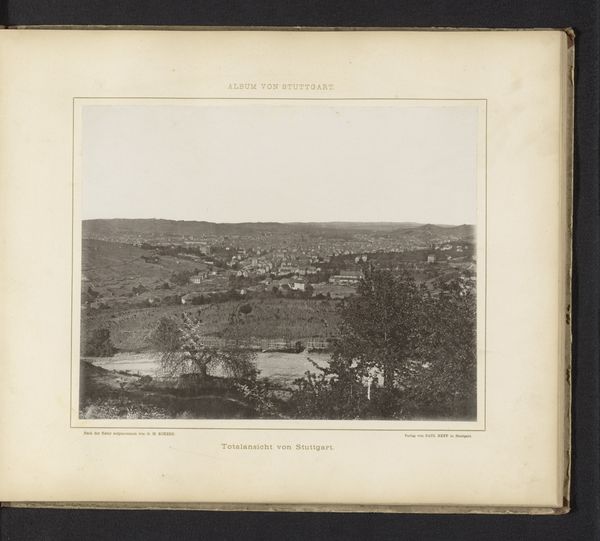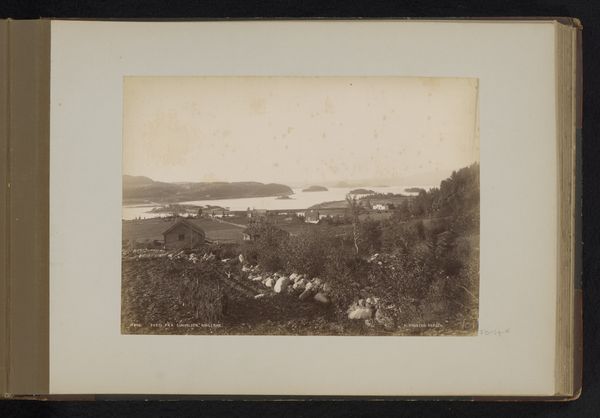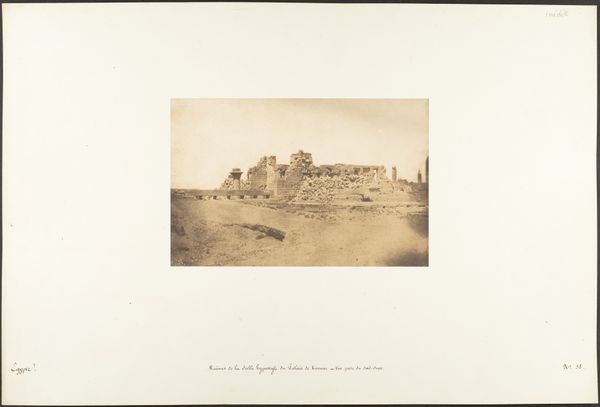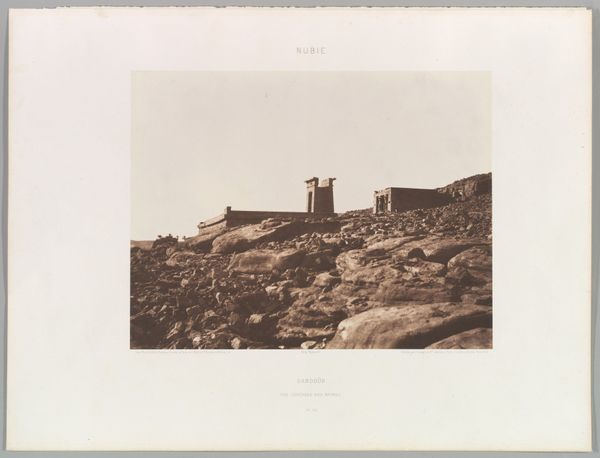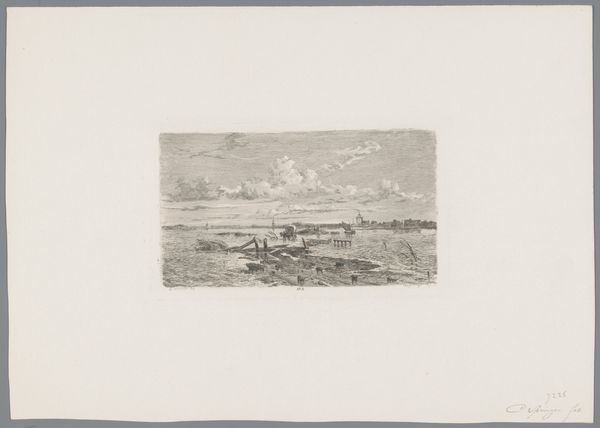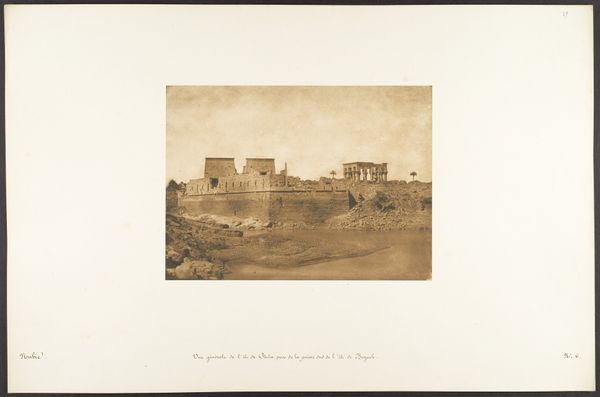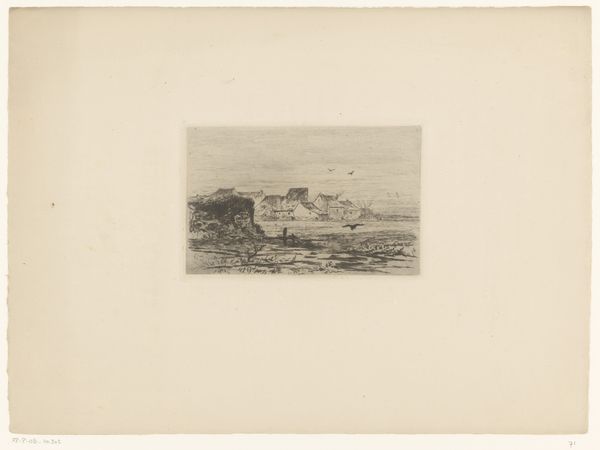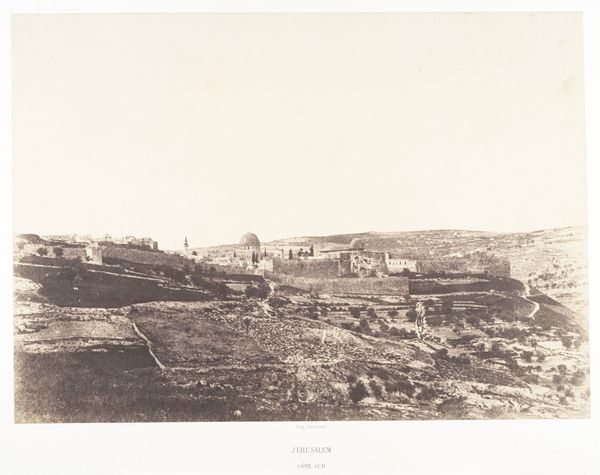
photography, site-specific, albumen-print
#
landscape
#
ancient-egyptian-art
#
photography
#
ancient-mediterranean
#
site-specific
#
albumen-print
#
realism
Dimensions: height 165 mm, width 230 mm
Copyright: Rijks Museum: Open Domain
Editor: We’re looking at Francis Frith’s albumen print, “Gezicht op de ruïne van de tempel van Kalabsja,” taken before 1859. It’s currently housed at the Rijksmuseum. I’m struck by the composition – the stark contrast between the ruins in the foreground and the tranquil river in the distance. How do you interpret this work? Curator: This photograph encapsulates the fraught relationship between the West and the East during the colonial era. Frith's work wasn't simply documentary; it served as visual propaganda, reinforcing a narrative of a "lost" and "dying" ancient world ripe for Western intervention and "rescue." Look at how the ruin is framed. It emphasizes decay and abandonment. Editor: So, it's not just a landscape, but a statement? Curator: Exactly. Think about who had access to these images and what stories they told. These romanticized images helped to fuel the imperial gaze, solidifying power dynamics. The local people present become picturesque, part of the landscape of ruin rather than active agents in their own history. It reduces them, doesn’t it? Editor: It does. I hadn't considered that the aesthetic choices could carry such weight. Curator: The "truth" of photography is never neutral; it’s always shaped by the photographer's perspective and the historical context. Frith profited from and furthered the Orientalist stereotype that demeaned and exploited ancient Egyptian culture. Understanding that changes how we engage with this seemingly straightforward image of ruins, right? Editor: Absolutely. It’s unsettling, but also so important to recognize those layers. I will definitely look at similar works differently moving forward. Curator: Likewise, it encourages to me delve even deeper into how Western narratives influence art historical discourse!
Comments
No comments
Be the first to comment and join the conversation on the ultimate creative platform.
